Abstract
Antigenic determinants of Australia antigen (AuAg) may be determined by haemagglutination inhibition with ease and high sensitivity. The reaction depends on the inhibitory effect of the test antigen-positive sample on the agglutination by specific antibody of glutaraldehyde-fixed sheep erythrocytes which have been tanned and coated with AuAg of different specificities. The standard monospecific antibody reactants are directed against one or other of the common antigens, a and Re, or against the subtypic determinants, d, y, w and r. Because it is more sensitive than conventional immunodiffusion or electrosyneresis, and more convenient than radio-immunoassay, haemagglutination inhibition is most suited to large-scale determinations of AuAg subtypes in samples of relatively low antigenic activity.
Full text
PDF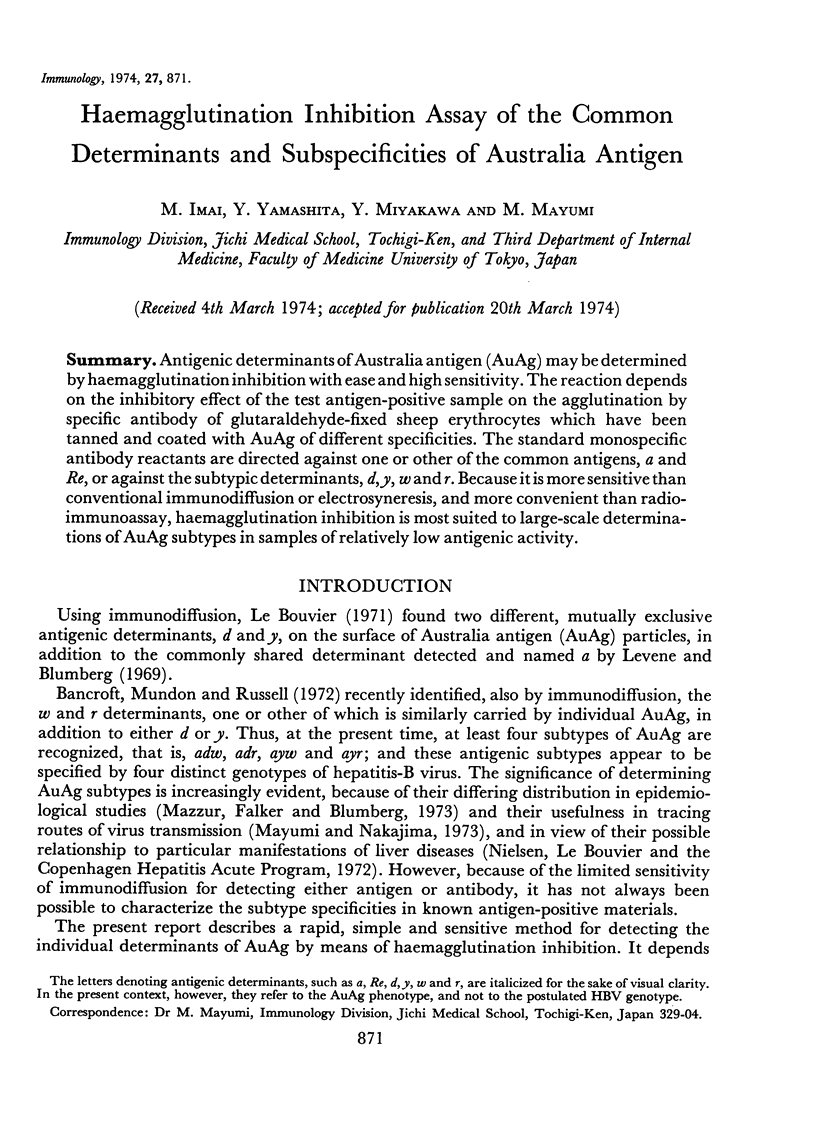
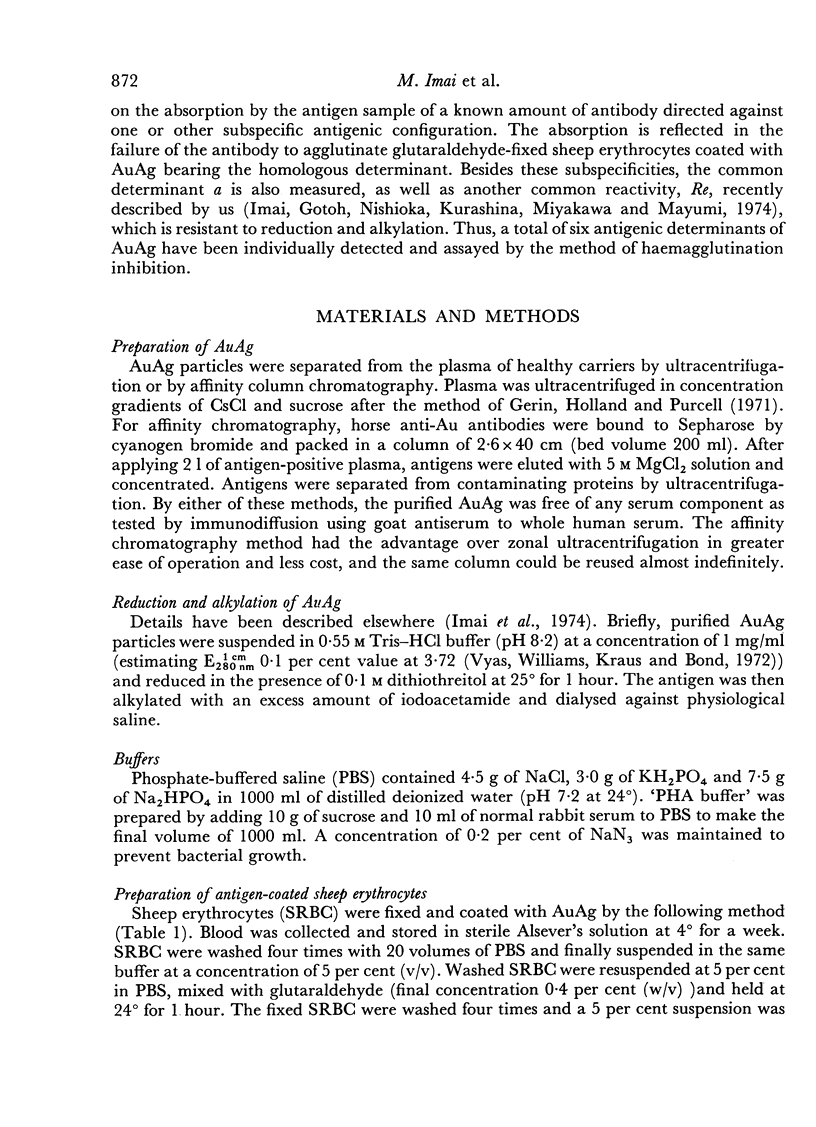
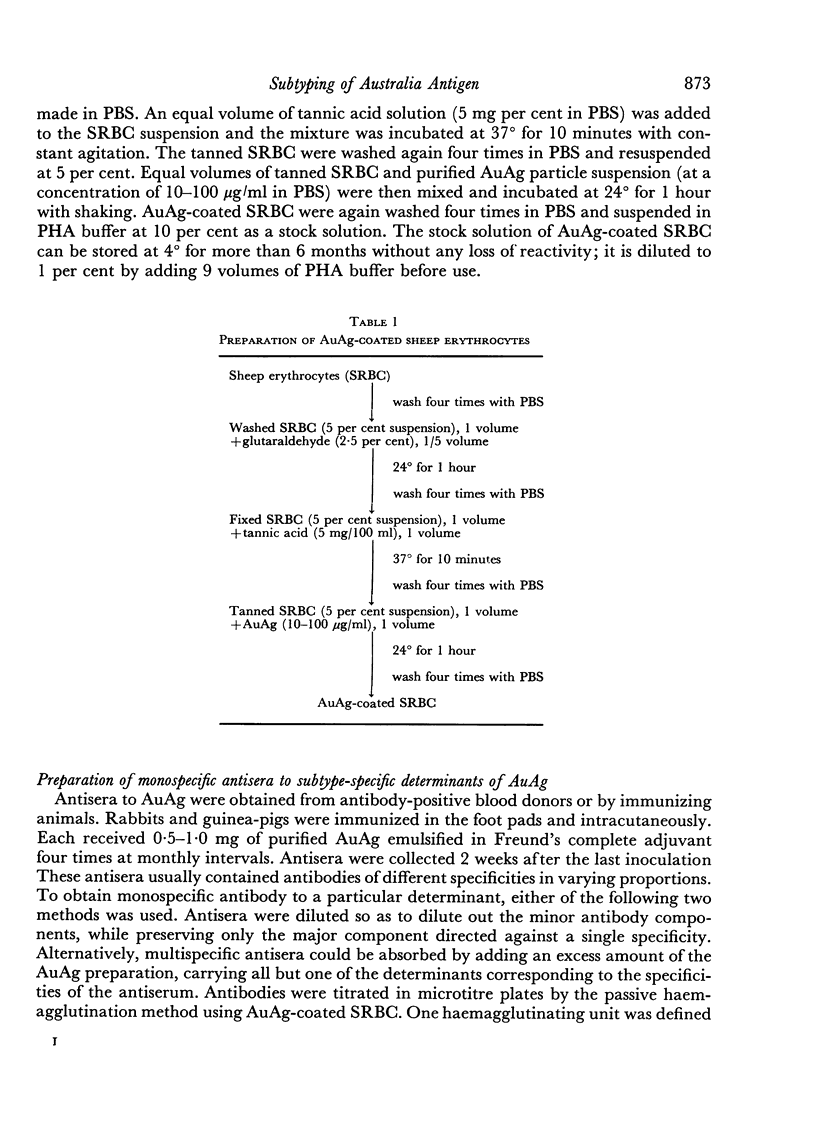
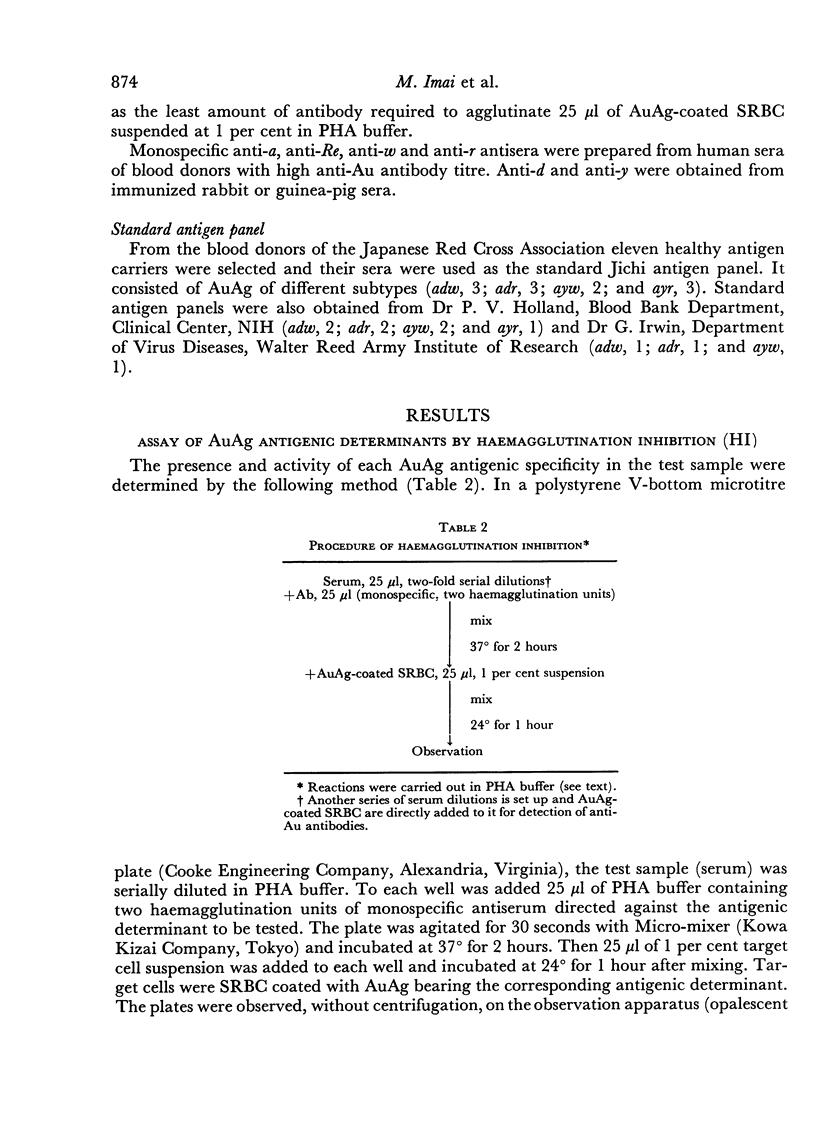
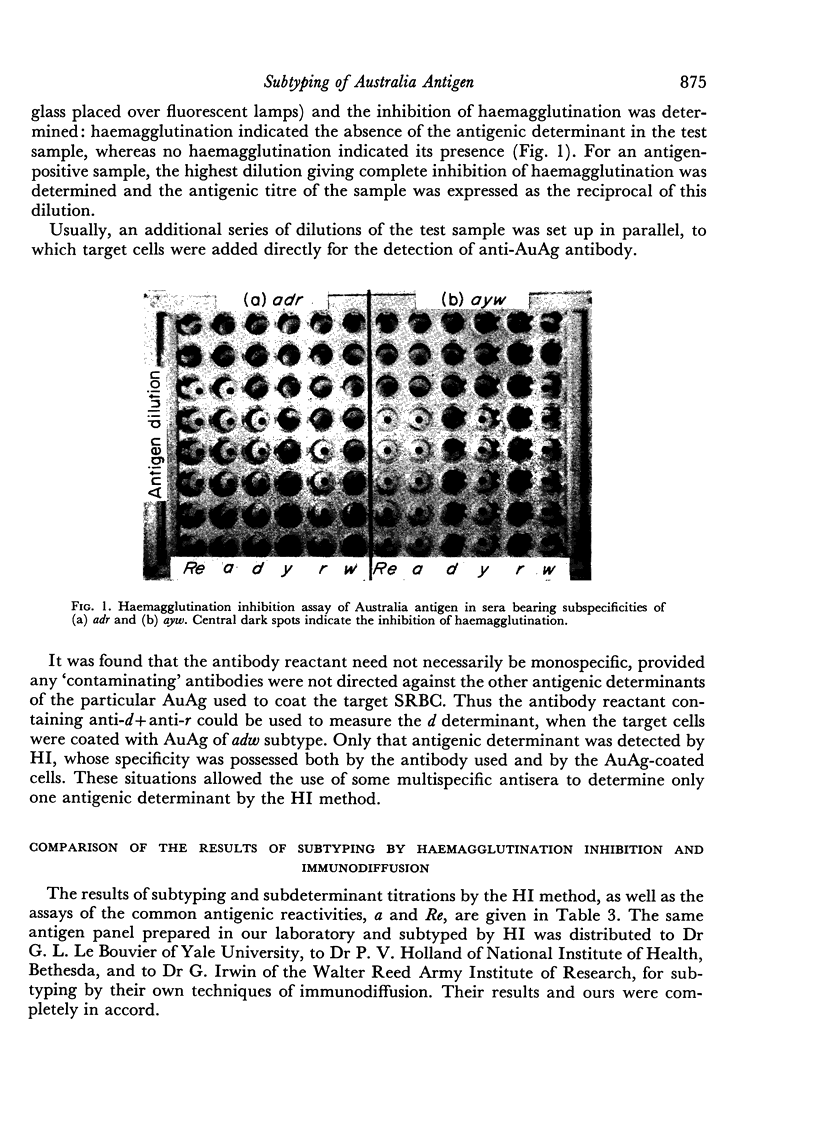
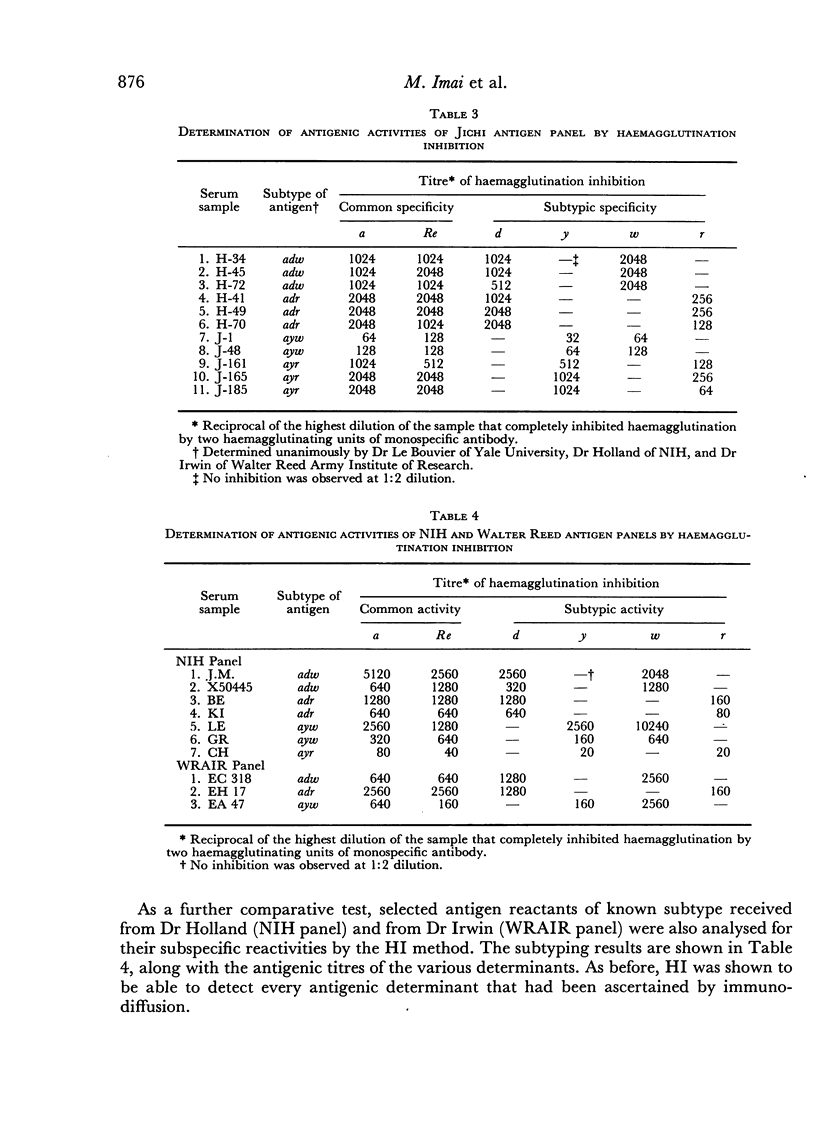
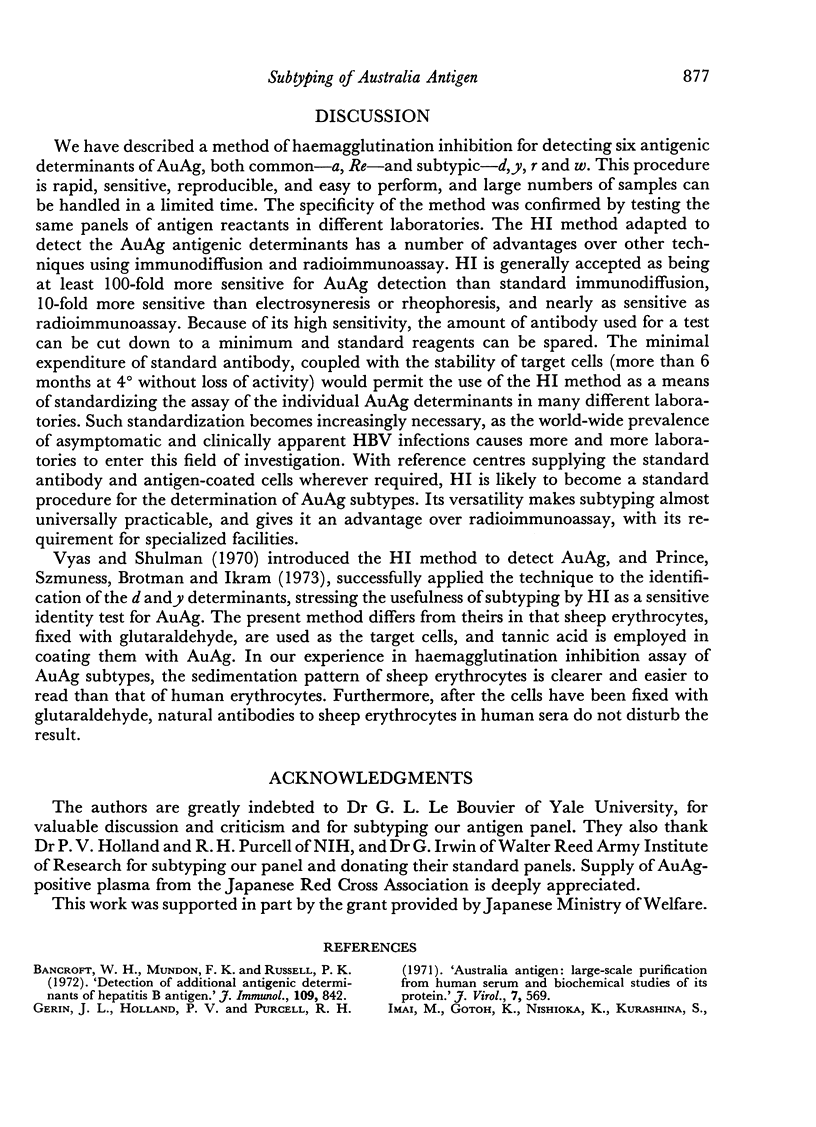
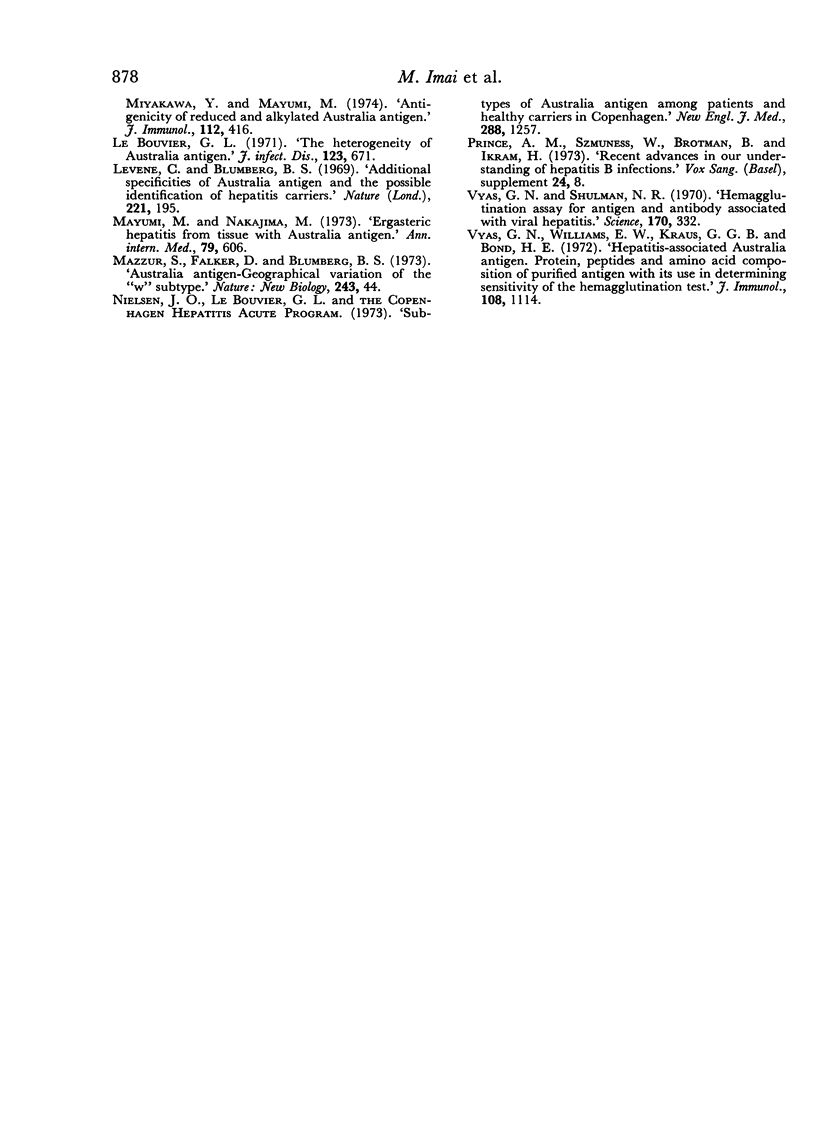
Images in this article
Selected References
These references are in PubMed. This may not be the complete list of references from this article.
- Bancroft W. H., Mundon F. K., Russell P. K. Detection of additional antigenic determinants of hepatitis B antigen. J Immunol. 1972 Oct;109(4):842–848. [PubMed] [Google Scholar]
- Gerin J. L., Holland P. V., Purcell R. H. Australia antigen: large-scale purification from human serum and biochemical studies of its proteins. J Virol. 1971 May;7(5):569–576. doi: 10.1128/jvi.7.5.569-576.1971. [DOI] [PMC free article] [PubMed] [Google Scholar]
- Imai M., Goto A., Nishioka K., Kurashina S., Miyakawa Y. Antigenicity of reduced and alkylated Australia antigen. J Immunol. 1974 Jan;112(1):416–419. [PubMed] [Google Scholar]
- Levene C., Blumberg B. S. Additional specificities of Australia antigen and the possible identification of hepatitis carriers. Nature. 1969 Jan 11;221(5176):195–196. doi: 10.1038/221195a0. [DOI] [PubMed] [Google Scholar]
- Mayumi M., Nakajima M. Letter: Ergasteric hepatitis from tissue with Australia antigen. Ann Intern Med. 1973 Oct;79(4):606–606. doi: 10.7326/0003-4819-79-4-606_1. [DOI] [PubMed] [Google Scholar]
- Nielsen J. O., Le Bouvier G. L. Subtypes of Australia antigen among patients and healthy carriers in Copenhagen. A relation between the subtypes and the degree of liver damage in acute viral hepatitis. N Engl J Med. 1973 Jun 14;288(24):1257–1261. doi: 10.1056/NEJM197306142882401. [DOI] [PubMed] [Google Scholar]
- Vyas G. N., Shulman N. R. Hemagglutination assay for antigen and antibody associated with viral hepatitis. Science. 1970 Oct 16;170(3955):332–333. doi: 10.1126/science.170.3955.332. [DOI] [PubMed] [Google Scholar]
- Vyas G. N., Williams E. W., Klaus G. G., Bond H. E. Hepatitis-associated Australia antigen. Protein, peptides and amine acid composition of purified antigen with its use in determining sensitivity of the hemagglutination test. J Immunol. 1972 Apr;108(4):1114–1118. [PubMed] [Google Scholar]



